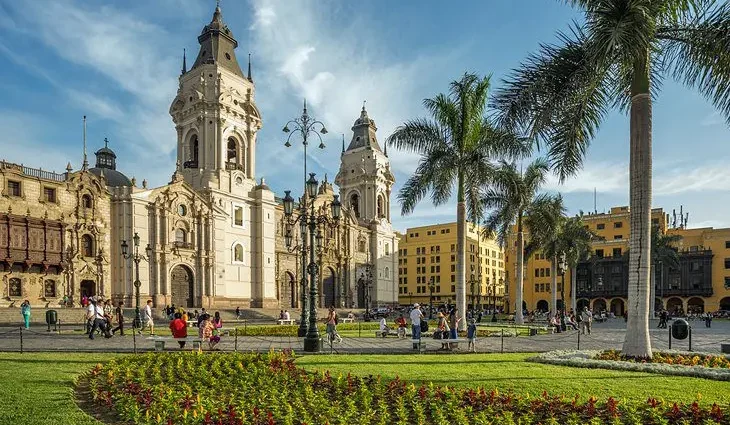Contents
- 1. Plaza de Armas
- 2. Convento de San Francisco
- 3. Cathedral
- 4. Circuito Magico del Agua (Magic Water Tour) in the Park of the Reserve
- 5. Stroll through Parque del Amor (Love Park)
- 6. Go Shopping in Miraflores
- 7. Delve into History at the Museo de la Nacion (National Museum)
- 8. Larco Museum
- 9. Santo Domingo
- 10. Huaca Pucllana
- 11. Museo Nacional de Arqueología, Antropología, e Historia (Archaeology, Anthropology, and History Museum)
- 12. Sample Lima’s World-Class Cuisine
- 13. Las Nazarenas
- 14. Watch the Sunset at Barranco
- Map of Tourist Attractions & Things to Do in Lima
At first glimpse, Lima seems to stretch endlessly from the ocean into the hills, a sprawling metropolis that doesn’t look anything like the tourist images of brightly dressed Andean villagers posed with their llamas in front of soaring mountain peaks. But, a closer look proves that this huge city — home to almost a third of Peru’s population — has its own attractions and things to do that are as fascinating and colorful as the inland scenes you’ve pictured.
So take time to explore this vibrant city and visit its outstanding museums to set the historical and cultural stage for what you’ll see elsewhere in Peru. Admire its colonial architecture, with beautiful buildings embellished by intricately carved wooden balconies and Baroque flourishes.
Join locals in dining at some of South America’s finest restaurants, strolling in spacious green parks, and relaxing in Lima’s lively oceanside suburbs. You’ll see why the Spanish conquerors, who founded it in 1535 under Francisco Pizarro, called Lima “the King of Cities.”
To find all the best places to visit in this exciting city, follow our list of the top attractions in Lima.
1. Plaza de Armas
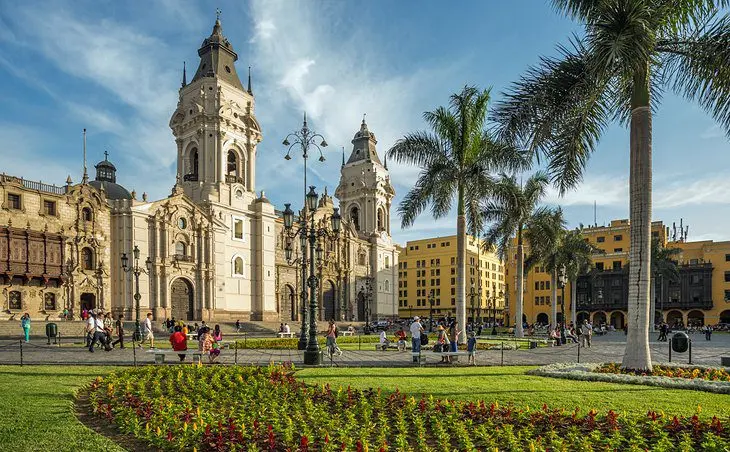
Also called Plaza Mayor, this broad square is the historical center of Lima and the most logical starting point for sightseeing. Most of the buildings from the original city were lost in the earthquake of 1746 — the only original structure standing in Lima’s Plaza de Armas is the bronze fountain in the center, built in 1651.
Its buildings reconstructed following the quake, Plaza de Armas is today a UNESCO World Heritage Site. Along with the cathedral, the square is surrounded by the Archbishop’s Palace; the Casa del Oidor; and the Palacio del Gobierno, official residence of the president that was built on the spot where Jose San Martín declared the Independence of Peru on July 28, 1821. You can see the changing of the guard there on weekdays at noon, always a popular attraction for tourists.
Leading from Plaza de Armas to Plaza San Martin, pedestrian-only Jiron de la Union is a mix of old and new buildings housing restaurants and shops. Here, you’ll find La Merced church, which was completed in the late 1700s and has an ornate Baroque colonial façade.
Casa de Aliaga is one of the oldest and best-preserved colonial mansions in South America, dating back to the early days of the city. It has been occupied by the Aliaga family since 1535, handed down through 17 generations, making it the oldest home in South America owned and occupied by a single family. The house, furnished in colonial style with pieces from the 16th, 17th, and 18th centuries, is open on a guided tour by advance reservation.
Accommodation: Where to Stay in Lima
2. Convento de San Francisco

The Convento de San Francisco (San Francisco church and its monastery) are most famous for their catacombs containing the bones of about 10,000 people interred here when this was Lima’s first cemetery. Below the church is a maze of narrow hallways, each lined on both sides with bones.
In one area, a large round hole is filled with bones and skulls arranged in a geometrical pattern, like a piece of art. If Mass is in progress upstairs, the sound reverberates eerily through the catacombs.
Visiting these is not for those who are claustrophobic, as ceilings are low and doorways between chambers are even lower, requiring people to duck when entering. But the catacombs are at the end of a tour of the church, so you can skip them.
There is much more to see here. The library, on the upper level, has thousands of antique books, and the monastery has an impressive collection of religious art. It is best known for a mural of the Last Supper showing the apostles dining on guinea pig, with a devil standing next to Judas.
The San Francisco church and monastery were consecrated in 1673 and it is one of the city’s best preserved colonial churches, having withstood the earthquakes of 1687 and 1746, although it did suffer extensive damage in a quake in 1970.
Address: Jirón Lampa y Ancash, Lima
3. Cathedral

Lima’s cathedral dominates the east side of the Plaza de Armas. Construction began on the original cathedral in 1535, and it was enlarged in 1564, based on the design of the cathedral in Seville, Spain.
It was damaged by an earthquake in 1687 and almost destroyed by the big quake of 1746 but was quickly rebuilt to its present appearance. Look for the outstanding carved choir, a carving of Jesus in the chapel of St. John the Baptist, and the altars in the ornate Spanish Baroque style known as churrigueresque.
A chapel decorated in mosaics holds the tomb of Francisco Pizarro, the founder of Lima. A small Museum of Religious Art lies in the back of the cathedral, and in the courtyard is a very pleasant tea room.
Address: Plaza de Armas, Lima
4. Circuito Magico del Agua (Magic Water Tour) in the Park of the Reserve
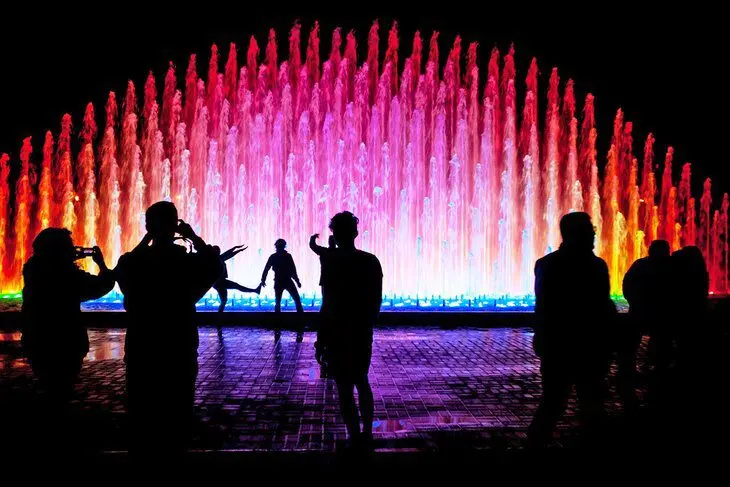
The Magic Water Tour was opened in the Park of the Reserve in 2007, and within a year counted two million visitors. It holds the record for the largest fountain complex in the world, with 13 separate fountains.
The largest, the Fuente Mágica, shoots a jet of water more than 80 meters high, while the Fuente Túnel de las Sorpresas (Tunnel of Surprises) is a 35-meter tunnel of water to walk through. At the Fuente de la Fantasia, you can see a laser and picture show with jets synchronized to music.
Address: Madre de Dios, Lima
5. Stroll through Parque del Amor (Love Park)

You won’t find a more romantic spot to watch the sunset than the Parque del Amor (Park of Love) on the Malecón in Miraflores. Mosaic designs created from tiny tiles line the undulating walls, often compared to those designed by Antoni Gaudí for Parc Güell in Barcelona, Spain.
Lines from Peruvian poets — Abelardo Sánchez León and Augusto Tamayo Vargas among them — are worked into the mosaics. Paths meander along the clifftops, lined by flowers and leading to the park’s centerpiece, El Beso (The Kiss), a large sculpture of an embracing couple created by Peruvian sculptor Victor Delfín.
Parque del Amor is open until 11pm each evening.
6. Go Shopping in Miraflores

On cliffs above the ocean, just south of central Lima, Miraflores is a neighborhood of modern glass-and-steel commercial buildings mixed with some fine old colonial homes and lots of green space.
Here is where you’ll find smart shops and restaurants serving the “New Peruvian” cuisine that’s drawing worldwide attention in culinary circles.
Beautiful parks and green spaces stretch along the cliff tops overlooking the water, and it’s common to see hang gliders drifting from the cliffs, above surfers in the waves below. Expect slightly higher prices in this more affluent neighborhood.
You’ll find plenty of things to do here besides browsing in the shops and sampling the New Peruvian cuisine. Those interested in pre-Columbian cultures should book a tour of the Museo Amano to see a private collection of Peruvian ceramics and textiles, arranged chronologically.
Although Pre-Columbian cultures, including Chimu and Nazca, are well represented, Museo Amano is best known for its remarkable collection of textiles from the less-known Chancay culture of the northern coast. Tours must be booked in advance.
Address: Retiro 160, Miraflores
7. Delve into History at the Museo de la Nacion (National Museum)
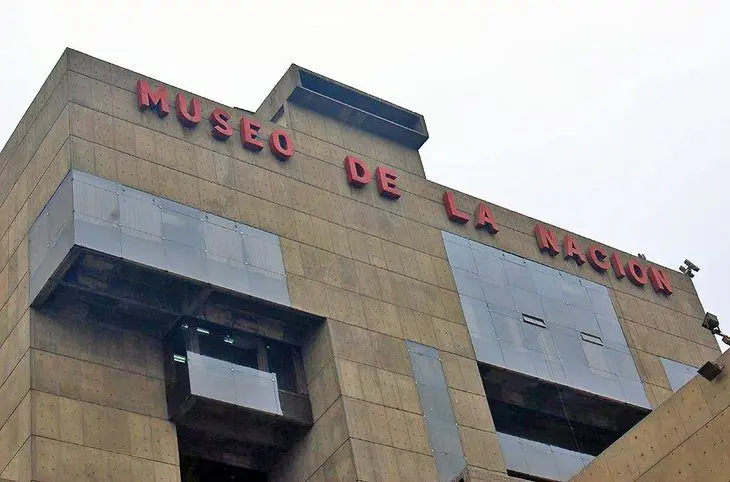
As the largest museum in Lima, the Museo de la Nacion is the best place to begin exploring Peru’s ancient history and gain an understanding of Peruvian culture. The museum covers the entire archeological history of Peru, from the first inhabitants to the Inca Empire.
Exhibits of ceramics and textiles, along with scale models of archeological sites such as Machu Picchu and the Nazca lines are arranged in chronological order to show the progression from one culture to the next. Most impressive is the replica of the grave of the Lord Sipan, the first of the Moche mummies found at Huaca Rajada in Sipán, Peru. Most displays are labeled and described in Spanish and English.
Address: Av. Javier Prado Este 2465, San Borja
8. Larco Museum

South of central Lima in Pueblo Libre is the Rafael Larco Herrera Museum, more commonly called the Larco Museum. The 18th-century viceroy mansion that houses it was built on the site of a pre-Columbian pyramid from the 7th century.
The Larco Museum contains a huge collection of more than 40,000 pieces of Peruvian ceramics, a large portion of which is from the Moche and Chimú cultures. The permanent exhibition does not display all the ceramics; however, you can see a great deal of the collection in an informal setting in the Visible Storage section, which includes over 30,000 pieces.
In addition, the museum’s excellent collection of pre-Columbian art includes gold work, textiles, stone carvings, and metalwork. The grounds are home to a lovely garden with plenty of places to sit while you contemplate its natural beauty.
Address: Av. Bolivar 1515, Pueblo Libre, Lima
9. Santo Domingo

Built in 1540 on land given to the Dominican Friar Vicente Valverde by Francisco Pizarro, the church and monastery of Santo Domingo is one of the oldest and most historic in Lima. Here, you will find the relics of Saint Rose of Lima; San Juan Masias; and Saint Martin de Porres, the first black saint in the Americas.
The statue of Saint Rose was given to Santo Domingo by Pope Clement X. This monastery is best known for its tile mosaics picturing the life of St. Dominic, Santo Domingo de Guzman, who founded the Dominican order. Inside the colorfully painted cloister is a peaceful green garden. The church is a short walk northwest of Plaza de Armas in central Lima.
Location: Camaná & Conde de Superunda
10. Huaca Pucllana
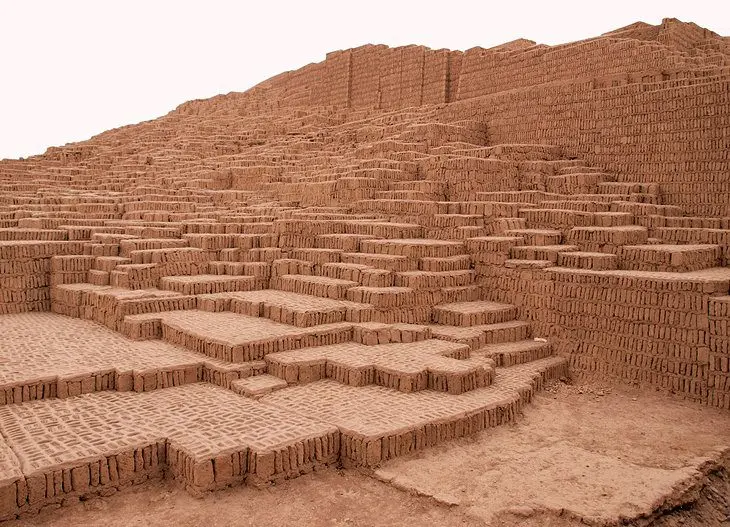
The pyramid-shaped temple of Huaca Pucllana lies in the heart of Miraflores and is now incongruously surrounded by buildings. Built of adobe and clay bricks — a construction material that would never have survived for more than 1,000 years in any other climate — this pyramid is formed in seven staggered platforms.
The Lima Culture, by whom the pyramid was built, developed in the central coast of Peru between 200 CE and 700 CE. From artifacts discovered here, it is known to have been important as both a ceremonial and administrative center.
The area is divided into two sections, one of which shows evidence of being used for offerings of fish, while the other appears to have been administrative. A burial vault was uncovered here with human remains, and artifacts have been found from the later Wari culture, which thrived in this area from about 500 to 900 CE.
You must tour the Pucllana Site Museum with a guide, but the tours are quite inexpensive.
Address: Calle General Borgoño cuadra 8, Lima
11. Museo Nacional de Arqueología, Antropología, e Historia (Archaeology, Anthropology, and History Museum)
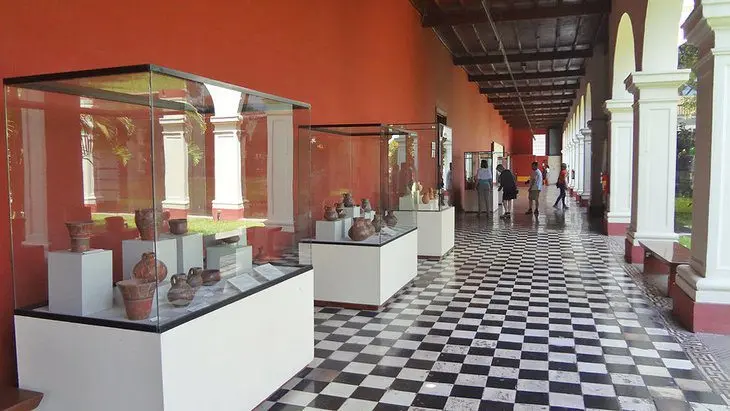
Not as large as the Museo de la Nacion, the National Archaeology, Anthropology, and History Museum does an excellent job of exploring the history of Peru from prehistoric times to the colonial era. The displays are well-organized, and you won’t be overwhelmed by the amount of material, making it easier to understand.
The variety is impressive, too, with priceless examples of ceramics, figural stone carvings, obelisks, wrapped mummies, burial tombs, jewelry, tapestries, and gold and metal work, many shown with scale models of the archeological sites.
The ceramic collection features pieces that date from 2800 BCE, and among the carved obelisks are the granite Tello Obelisk and the famous Estela Raimondi. Parents should be aware that some of the ceramic figures may not be suitable for children.
Included with the museum is the adjacent home, once occupied by both Jose de San Martin and Simon Bolivar.
Address: Plaza Bolivar, Pueblo Libre, Lima
12. Sample Lima’s World-Class Cuisine
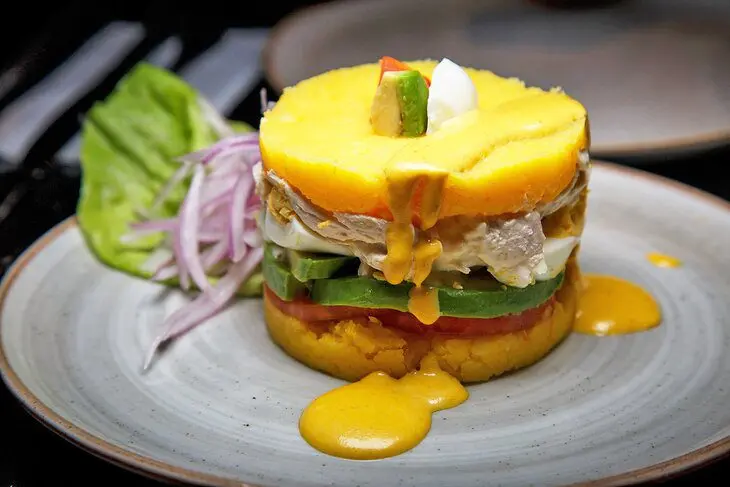
During the past decade, Lima has taken the world of gastronomy by storm, as a generation of young Peruvian chefs have returned home from top culinary schools to create inspired dishes from the abundant local ingredients. The breadth of their training has brought a vibrant cuisine marked by a fusion of influences, especially Asian, with Peru’s own culinary traditions.
In 2022, two Lima restaurants, Central and Mayta, made the list of the World’s 50 Best Restaurants, with Central listed as #2. More than two dozen Lima restaurants have Michelin stars.
Particularly notable is Lima’s Nikkei cuisine, a fusion of Peruvian and Japanese traditions resulting from the large number of Japanese who have emigrated to Peru. Lima’s Maido is the best place to sample it, with a tasting menu that offers a full range of dishes.
Don’t overlook the traditional favorites such as Pollo a la Brasa, succulent grilled chicken flavored with local spices and usually served with green ahi sauce, a blend of fresh cilantro, Peruvian mint, yellow peppers, lime juice, and mild white cheese. Wherever you dine in Lima, you’re sure to find a wide variety of ingredients harvested from the sea.
13. Las Nazarenas
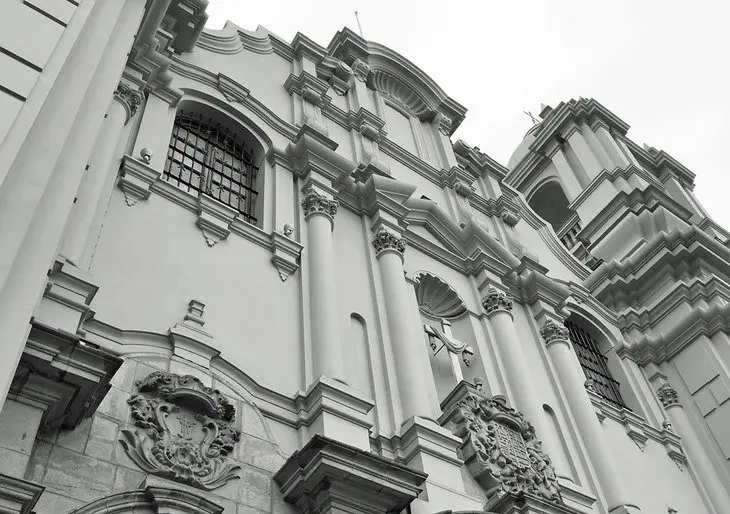
Several blocks east of the Plaza de Armas, Lima’s Church of the Nazarenas has a unique history. This area was once a poor neighborhood of freed black slaves, and in the middle of what was little more than a shanty town, an ex-slave painted a mural of the Crucifixion of Christ on a wall.
In 1655, an earthquake leveled most of this area but left the wall standing intact. This was seen by the locals as a miracle, and Iglesia de Las Nazarenas was built around the wall with the image, which was known as El Señor de los Milagros.
An oil replica is now mounted on this wall, which stands behind the altar. Each October 18, the painting is paraded through the streets in the El Señor de los Milagros Festival, accompanied by a procession that numbers in the thousands.
Address: Huancavelica and Tacna Ave, Lima
14. Watch the Sunset at Barranco

South of central Lima and Miraflores, the suburb of Barranco has long been popular with artists and writers, and it’s one of the city’s most appealing places to visit for those who want a respite from busy tourist attractions.
Although not as manicured as Miraflores or as meticulously restored as Lima’s historical center, Barranco has some beautiful 19th- and early-20th-century architecture and the authentic feel that comes in a place where locals far outnumber tourists.
You can join them as they sit on the park benches, walk their dogs, and shop or eat at the outdoor patios in front of the street vendors. The small inns and restaurants that line the seaside hills and cliffs are popular places to have dinner and watch the sunset.
Begin at the Parque Municipal, an open space surrounded by colonial architecture. From there walk down Zapita, over Puente de Los Suspiros (Bridge of Sighs), and out to the cliff lookout.
The private Museo de Arte Colonial Pedro de Osma is housed in the historic mansion Palacio de Osma. The museum’s exceptional collection of colonial art from around Peru includes paintings, sculptures, metalwork, stonework, silver, and furniture.










